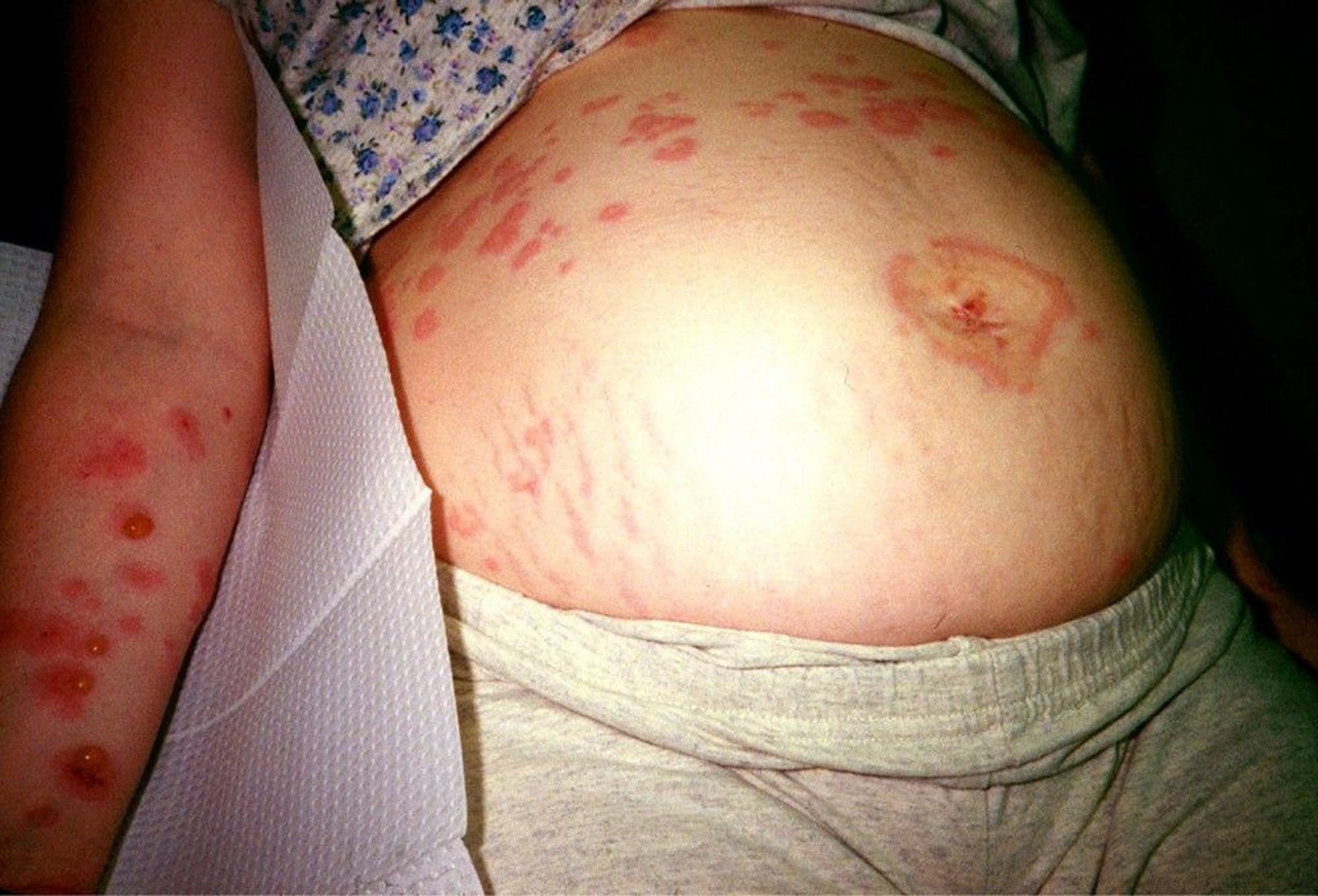- Overview of High-Risk Pregnancy
- Maternal Mortality and Perinatal Mortality
- Risk Factors for Pregnancy Complications
- Hemolytic Disease of the Fetus and Newborn
- Problems With Amniotic Fluid
- Preeclampsia and Eclampsia
- Placenta Previa
- Vasa Previa
- Placental Abruption (Abruptio Placentae)
- Cervical Insufficiency
- Prelabor Rupture of Membranes (PROM)
- Preterm Labor
- Stillbirth
- Hyperemesis Gravidarum
- Polymorphic Eruption of Pregnancy
- Pemphigoid Gestationis
Polymorphic eruption of pregnancy is intensely itchy rashes that occur only during pregnancy.
Topic Resources
Polymorphic eruption of pregnancy occurs in about 1 in 160 to 300 pregnancies. It is much more common among woman who are carrying more than one fetus (multiple births). This rash usually occurs in a first pregnancy. The cause is unknown.
Red, irregularly shaped, slightly raised patches appear on the abdomen. The patches sometimes have tiny fluid-filled blisters in the center. Often, the skin around them is pale. The rash spreads to the thighs, buttocks, and occasionally the arms. The palms, soles, and face are usually not affected. Hundreds of itchy patches may develop. Itching is bothersome enough to keep the woman awake at night.
© Springer Science+Business Media
Typically, the rash appears during the last 2 to 3 weeks of pregnancy and occasionally during the last few days or after delivery. However, it may occur at any time after the 24th week. Usually, the rash clears up within 15 days after delivery. It recurs in up to 5% of subsequent pregnancies.
Doctors diagnose polymorphic eruption of pregnancy by examining the skin. However, making a definite diagnosis may be difficult because it resembles other itchy rashes.
Applying a corticosteroid cream (such as triamcinolone) directly to the skin often helps. Rarely, for severe symptoms, a corticosteroid (such as prednisone) is given by mouth.Applying a corticosteroid cream (such as triamcinolone) directly to the skin often helps. Rarely, for severe symptoms, a corticosteroid (such as prednisone) is given by mouth.
Antihistamines that do not cause drowsiness, taken by mouth, can also be used to relieve the itching.


